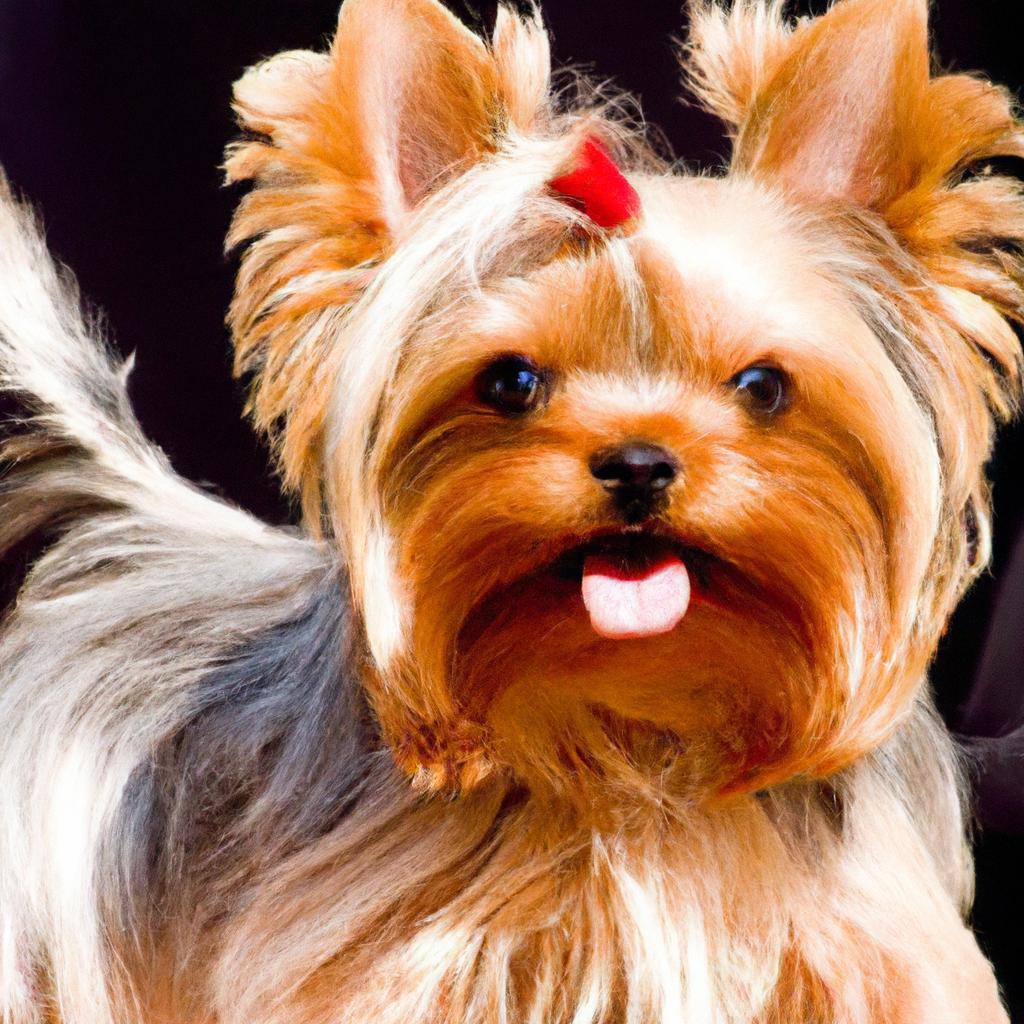Imagine a family excitedly bringing home a beautiful, fluffy Siberian Husky, only to discover the challenges that come with it. This breed, known for its striking looks and boundless energy, can be a handful. They require extensive exercise, mental stimulation, and a firm, experienced owner. Without proper training, their stubbornness can lead to chaos. While Huskies are loving companions, they demand dedication and patience. If you’re considering a dog, think carefully—some breeds, like the Husky, may test your limits and reshape your life.
Contents
- Understanding the Unique Challenges of High-Energy Breeds
- Navigating Behavioral Complexities in Difficult Dog Ownership
- Essential Training Techniques for Managing Challenging Canines
- Choosing the Right Environment for Your Demanding Dog
- Q&A
Understanding the Unique Challenges of High-Energy Breeds
High-energy dog breeds, such as Border Collies, Australian Shepherds, and Siberian Huskies, present a unique set of challenges that can test even the most dedicated pet owners. These breeds are not just physically demanding; they also require mental stimulation to thrive. Without adequate exercise and engagement, they can develop behavioral issues, including excessive barking, chewing, and even aggression. Understanding these needs is crucial for anyone considering bringing a high-energy dog into their home.
One of the primary challenges is the sheer amount of exercise these dogs require. A simple walk around the block is often insufficient. Owners must commit to daily activities that can include:
- Long runs or jogs
- Interactive play sessions with toys
- Agility training or obedience classes
- Socialization with other dogs
Failing to meet these physical demands can lead to pent-up energy, resulting in destructive behaviors that can be frustrating for owners and harmful to the home environment.
In addition to physical exercise, mental stimulation is equally important. High-energy breeds are often highly intelligent and require challenges that engage their minds. Activities that can help satisfy this need include:
- Puzzle toys that dispense treats
- Training sessions that teach new commands or tricks
- Participating in dog sports like flyball or herding trials
- Exploring new environments through hiking or agility courses
Without these mental challenges, these breeds can become bored and restless, leading to anxiety and behavioral problems that can be difficult to manage.
Lastly, the commitment to training and socialization cannot be overstated. High-energy dogs often have strong instincts and can be prone to stubbornness. Consistent, positive reinforcement training is essential to ensure they develop good manners and social skills. Owners must be prepared to invest time in:
- Regular training sessions
- Socializing with other dogs and people
- Establishing a routine that includes both exercise and downtime
- Seeking professional help if behavioral issues arise
By understanding and addressing these challenges, potential owners can create a fulfilling and harmonious relationship with their high-energy companions, ensuring that both the dog and the owner enjoy a happy and balanced life together.
Navigating Behavioral Complexities in Difficult Dog Ownership
Owning a dog with behavioral complexities can be a rewarding yet challenging experience. Understanding the unique needs of these dogs is crucial for fostering a harmonious relationship. Many breeds, such as the Border Collie or Belgian Malinois, are known for their intelligence and energy, but they can also exhibit behaviors that require a dedicated owner. These dogs thrive on mental stimulation and physical activity, and without proper engagement, they may develop destructive habits or anxiety issues.
Another breed that often presents challenges is the American Pit Bull Terrier. While they are known for their loyalty and affection, they can also display aggression if not properly socialized. Owners must invest time in training and socialization from an early age to mitigate these tendencies. This includes exposing them to various environments, people, and other animals to build their confidence and reduce fear-based reactions.
Additionally, breeds like the Shiba Inu are notorious for their independent nature. This can make training a daunting task, as they often exhibit stubbornness and a strong-willed attitude. Owners must employ consistent and positive reinforcement techniques to encourage desired behaviors. Patience and persistence are key, as these dogs may take longer to respond to commands compared to more eager-to-please breeds.
Lastly, dogs with a history of trauma or neglect, regardless of breed, can present significant behavioral challenges. These dogs may struggle with trust issues, fear, and anxiety, requiring a compassionate and understanding approach. Creating a safe and stable environment is essential, along with gradual exposure to new experiences. Owners should be prepared for a journey of rehabilitation, where small victories can lead to a profound bond and a fulfilling companionship.
Essential Training Techniques for Managing Challenging Canines
Managing challenging canines requires a strategic approach that combines patience, consistency, and effective training techniques. One of the most essential methods is **positive reinforcement**. This technique involves rewarding desirable behaviors with treats, praise, or playtime, which encourages dogs to repeat those behaviors. By focusing on what your dog does right rather than punishing unwanted behaviors, you create a more trusting and cooperative relationship. This method is particularly effective for breeds known for their stubbornness or high energy levels.
Another vital technique is **desensitization and counter-conditioning**. Many challenging dogs exhibit fear or aggression towards specific stimuli, such as other dogs, loud noises, or unfamiliar people. Gradually exposing your dog to these triggers in a controlled environment while pairing the experience with positive rewards can help them build confidence and reduce anxiety. Start with low-intensity exposure and slowly increase the challenge as your dog becomes more comfortable. This approach not only helps in managing fear but also fosters resilience in your canine companion.
Incorporating **structured routines** into your dog’s daily life can also significantly improve behavior. Dogs thrive on predictability, and a consistent schedule for feeding, walks, and playtime can help reduce anxiety and behavioral issues. Establishing a routine allows your dog to know what to expect, which can be particularly beneficial for breeds that are prone to separation anxiety or hyperactivity. Additionally, regular training sessions should be integrated into this routine to reinforce good behavior and provide mental stimulation.
Lastly, seeking the guidance of a **professional trainer or behaviorist** can be invaluable, especially for owners of particularly challenging breeds. These experts can provide tailored strategies and insights based on your dog’s specific needs and behaviors. Group classes can also be beneficial, as they offer socialization opportunities and allow dogs to learn in a controlled environment. Investing in professional help not only accelerates the training process but also equips owners with the tools necessary to manage their dogs effectively, leading to a more harmonious household.
Choosing the Right Environment for Your Demanding Dog
When considering a dog that requires a high level of care and attention, the environment you provide is crucial to their well-being. **Active breeds** such as Border Collies, Belgian Malinois, and Siberian Huskies thrive in spaces that offer ample room for exercise and mental stimulation. A home with a large, securely fenced yard can be a perfect fit, allowing these energetic dogs to run freely and explore their surroundings. Additionally, access to nearby parks or trails can enhance their daily routine, providing opportunities for socialization and varied experiences.
Moreover, the **social dynamics** of your household play a significant role in accommodating a demanding dog. If you have children or other pets, it’s essential to ensure that your dog can coexist peacefully with them. Some breeds may require a more structured environment where they can learn to interact appropriately with family members. Consider enrolling in training classes that focus on socialization and obedience, which can help create a harmonious living situation for everyone involved.
Another important factor is the **time commitment** required for a demanding dog. These breeds often need more than just physical exercise; they also require mental challenges to keep them engaged. Incorporating activities such as agility training, obedience exercises, or puzzle toys can significantly enhance their quality of life. If your schedule is packed, it may be beneficial to look into doggy daycare options or hire a professional dog walker to ensure your furry friend receives the attention they need.
consider the **environmental enrichment** that your home can provide. Dogs that are prone to boredom can develop behavioral issues if their needs are not met. Creating a stimulating environment with interactive toys, designated play areas, and regular outings can help keep their minds sharp and bodies active. By thoughtfully designing your living space and routine, you can create a nurturing environment that caters to the unique needs of your demanding dog, ensuring a fulfilling and happy life together.
Q&A
-
What breeds are considered the most difficult to own?
Some of the breeds often cited as the most challenging to own include:
- Border Collie
- Chow Chow
- Jack Russell Terrier
- Rottweiler
These breeds typically require significant time, training, and socialization to thrive.
-
Why are these breeds considered difficult?
These breeds often possess high energy levels, strong instincts, and unique temperaments that can lead to behavioral issues if not properly managed. For example:
- Border Collies need extensive physical and mental stimulation.
- Chow Chows can be aloof and require consistent training.
- Jack Russell Terriers are known for their stubbornness and need for firm leadership.
- Rottweilers require socialization to prevent aggression.
-
What challenges do owners face with these breeds?
Owners may encounter various challenges, including:
- High exercise demands leading to destructive behavior if unmet.
- Training difficulties due to stubbornness or independence.
- Socialization needs that require time and effort.
- Potential health issues that require regular veterinary care.
-
Can these breeds be suitable for the right owner?
Absolutely! With the right commitment, knowledge, and resources, these breeds can thrive in a loving home. Prospective owners should:
- Research the breed thoroughly.
- Invest time in training and socialization.
- Provide ample exercise and mental stimulation.
- Be prepared for a long-term commitment.
Choosing the right breed for your lifestyle is crucial for a successful and fulfilling relationship.
while every dog has its unique challenges, understanding the specific needs of the most difficult breeds can lead to rewarding companionship. Choose wisely, invest time in training, and embrace the journey for a fulfilling relationship.




